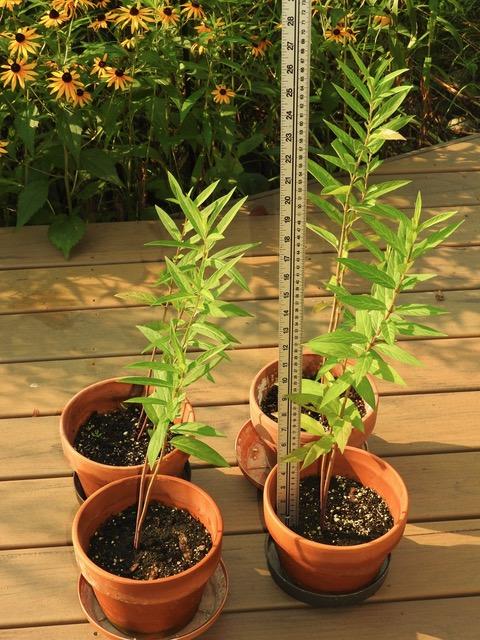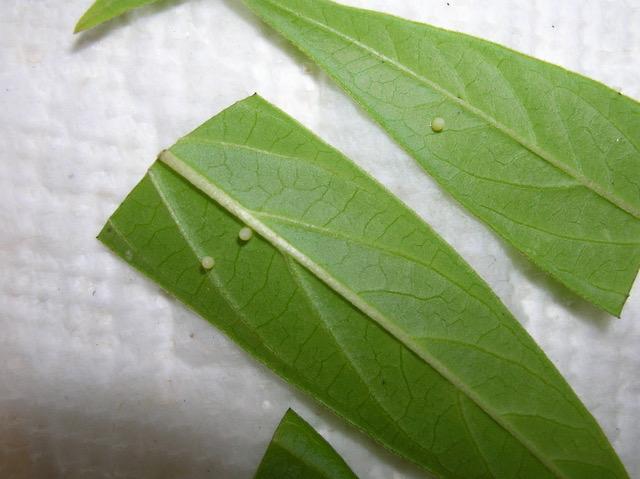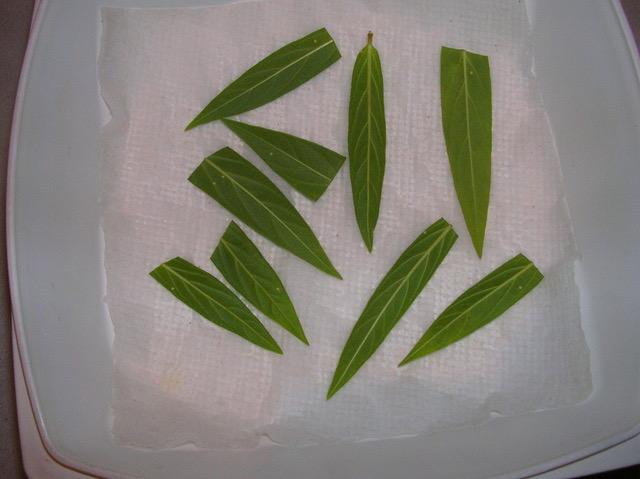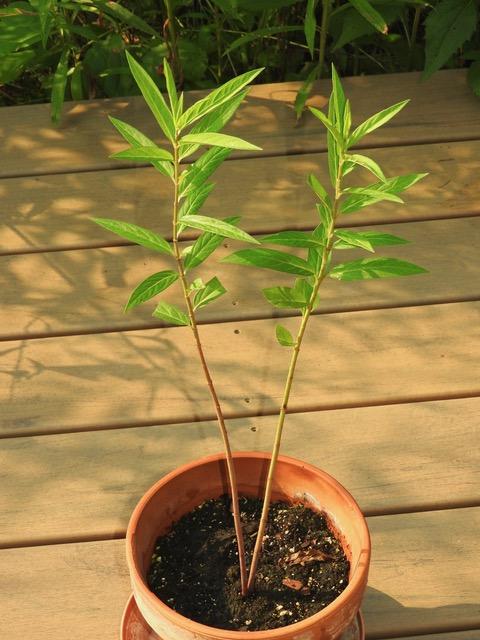by Ilse Gebhard, KAWO member
At our former home, over a period of several years, we lost most of our milkweed to a plant disease called Milkweed Yellows. It killed all of the Swamp Milkweed (Asclepias incarnata) and Butterfly Weed (Asclepias tuberosa) and most of the Common Milkweed (Asclepias syriaca). The disease is caused by a strain of phytoplasma, a class of bacteria distinguished by the absence of a cell wall, and is thought to be spread from plant to plant by a leafhopper or other sap-sucking insect.

Because the remaining Common Milkweed grew on a slope, I could not easily access it for finding Monarch (Danaus plexippus) eggs or larvae for the citizen science Monarch Larva Monitoring Project in which I was participating. Also, at several Kalamazoo Area Wild Ones’ native plant sales, I had been asked by potential customers if milkweeds would grow in pots on a balcony or patio. I theorized that Swamp Milkweed might, as its root system is not as deep as that of Common Milkweed or Butterfly Weed. All theories need to be tested and I needed to replace the milkweed lost to disease. Therefore, one spring I planted four Swamp Milkweed plants into 8-inch diameter clay pots and set them on our deck right next to a native plant flowerbed. The plants had been overwintered as plugs, so were a year old. Each plant put up 2 stems, the tallest of which was just over 2 feet by the end of summer.

Would a female Monarch find my Swamp Milkweed in pots and leave me some eggs? Starting in late May, when the plants only had a few small leaves, I checked the plants daily, and finally on the 4th of July, I found 3 eggs. I snipped off the leaves with eggs and brought them inside to raise. Would more eggs be laid? Yes, on July 5, 6, 7 and 9, by which time I had accumulated 15 eggs inside.

After a break in egg laying, it resumed on July 15th. Maybe a different female? It now became a challenge. How many eggs would be laid on my “Magic Swamps” if I kept bringing them in? Egg laying continued until August 23, for a total of 135 eggs and one 1st instar (larval stage) from an egg that I had missed.

The females were very secretive as only once did I see one flitting around the plants, although I glanced over at them many times. One added bonus to my frequent glances was to see our resident blue racer curled between the pots one day.
All photos by Ilse Gebhard.
